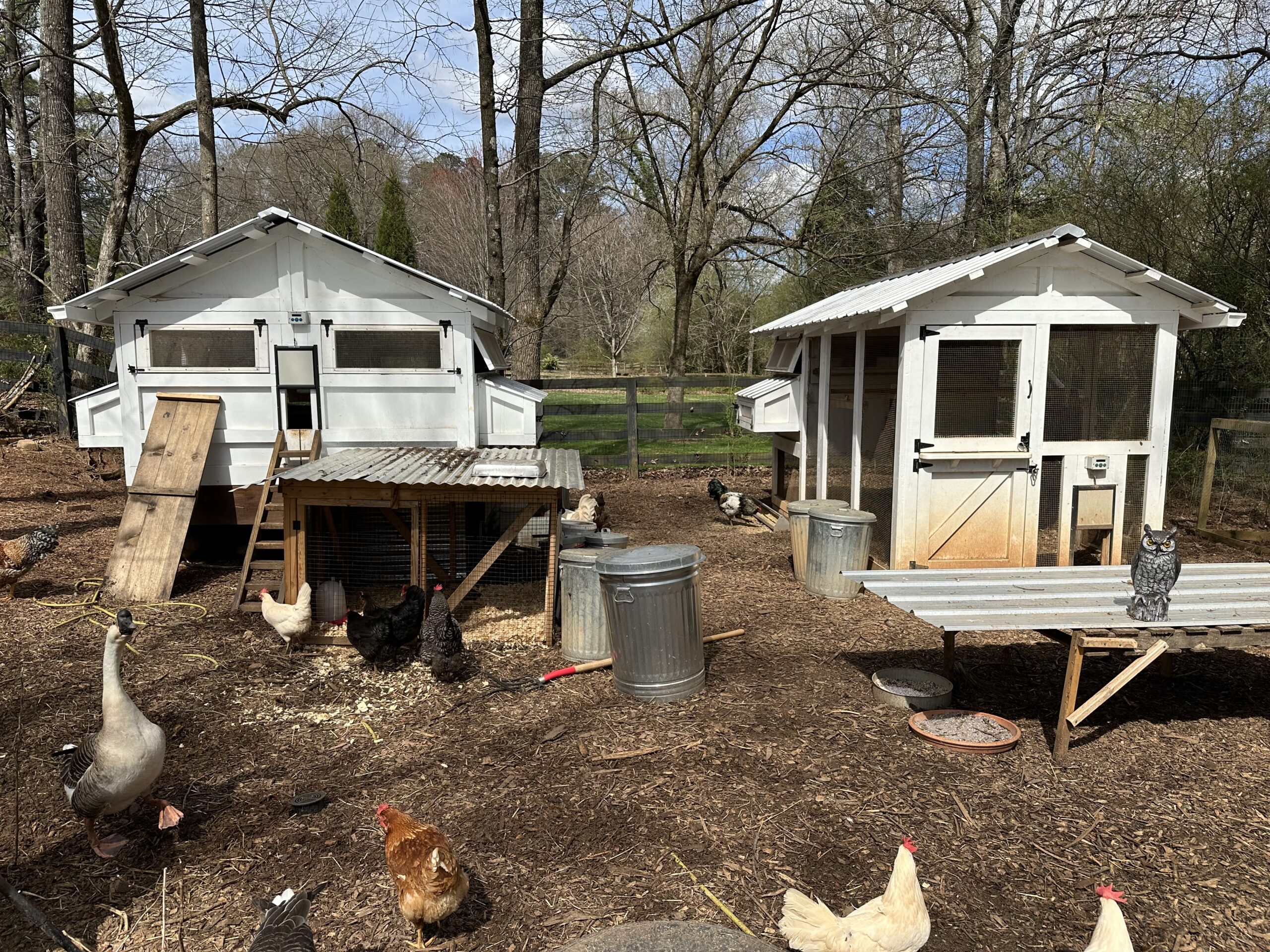When we decided to add 17 egg layers to our homestead in the summer of 2020, I immediately began researching the best chicken coop to meet our needs.
From the get-go, we knew we wanted to pasture-raise our chickens and keep daily chores to a minimum. As a result, we needed a coop that would meet the following requirements:
- An automatic chicken door that would open in the morning and close at night. (We’ve used both the Chickenguard and Chickcozy, which we compare here.)
- A watering system that holds enough water for several days or even weeks.
- A henhouse that would facilitate a deep litter system so we don’t have to clean it out frequently.
- Easy-to-access egg hutches so the kids can help collect eggs.
- Predator proof so we won’t have to worry about our hens’ safety at night.
Since I had zero woodworking experience, we quickly ruled out building a coop from scratch.
After weeks of intensive research and comparing various options, we decided to bite the bullet and invest in the American Coop, a reasonably expensive but high-quality coop from Carolina Coops (watch our full video review).
While the American Coop has served us well (so well, in fact, that I built a larger replica from scratch for our second flock in 2023), I don’t think we’d ever consider a coop we can’t quickly move again.
Our requirements and goals have evolved since we introduced chickens to our homestead several years ago. At the time, we weren’t aware of many of the concepts we have implemented since, including pasture rotation, predator control and manure management.
This article aims to equip you with enough information to select the proper coop (regardless of your flock’s size) that’s flexible enough even if your goals and requirements change along the way (as they have in our case).
The factors below are not in any particular order, but some are intertwined, as I’ll explain in the following sections.
Here are the key takeaways:
- Building a coop instead of purchasing one will equip you with essential woodworking skills you’ll eventually need on a homestead. Chickens don’t care about aesthetics or perfection, so don’t worry if your build isn’t perfect.
- A mobile chicken tractor offers tremendous flexibility, especially if you have enough pasture to rotate your chickens.
- If pasture rotation isn’t an option, consider a deep litter system to reduce disease risk and simplify manure control.
- Lock up smaller flocks (in a run or a mobile chicken tractor), or accept the occasional loss from aerial predators.
- Consider nesting boxes you can close at night to deter hens from roosting and pooping in them (this helps keep your eggs clean).
- Several smaller coops rather than one large one make adding additional hens (or another flock) easier. Remember, your flock’s egg production will start declining after the first year, and you’ll need to replace it (ideally before you retire your old hens).
- An attached (enclosed) run can offer flexibility but might not be necessary in a pasture-raised setting.
At the end of the article, I’ll also share the pros and cons of the coop designs we have tested, as well as the options we’re considering going forward.
So, let’s jump right in…
What to Consider Before Building or Buying Your First Chicken Coop
As mentioned above, the factors listed below aren’t in any particular order, but I tried grouping related factors since they might jointly influence your decision-making process.
1. Buy or Build?

One of the first decisions you’ll have to make is whether to build or buy a coop, and your woodworking skills will likely be the determining factor.
When we got into homesteading, neither my wife nor I had ever built anything with wood. As a result, we quickly dismissed the prospect of building a coop ourselves. In retrospect, we should have built a cheap coop instead of paying thousands of dollars for a high-end coop that no longer serves our needs.
While purchasing a coop might sound like the most convenient option (especially if you’re not a skilled woodworker), I’d encourage you to reconsider for several reasons, including price and a missed opportunity to acquire valuable woodworking skills that you’ll likely need as a homesteader.
To add some context to the cost argument, we built our second coop (which can house 30 birds) for about $1,500 instead of paying $8,000 to have Carolina Coops build it for us. That’s a significant difference. The expertise I acquired by building that coop has also helped me build several other structures for our homestead, including two rabbit hutches, two rabbit tractors, a goose shelter and a mobile chicken tractor.
The good news is that chickens don’t care about aesthetics. All they need is a dry place to sleep and lay eggs that is protected from predators. So don’t worry about building the perfect coop. Instead, focus on building something inexpensive but functional that’s flexible enough to adapt to changing requirements, or which can be moved or disassembled if needed.
(We’ll talk more about why that’s important in the following sections…).
2. Cooped-Up or Pasture-Raised?
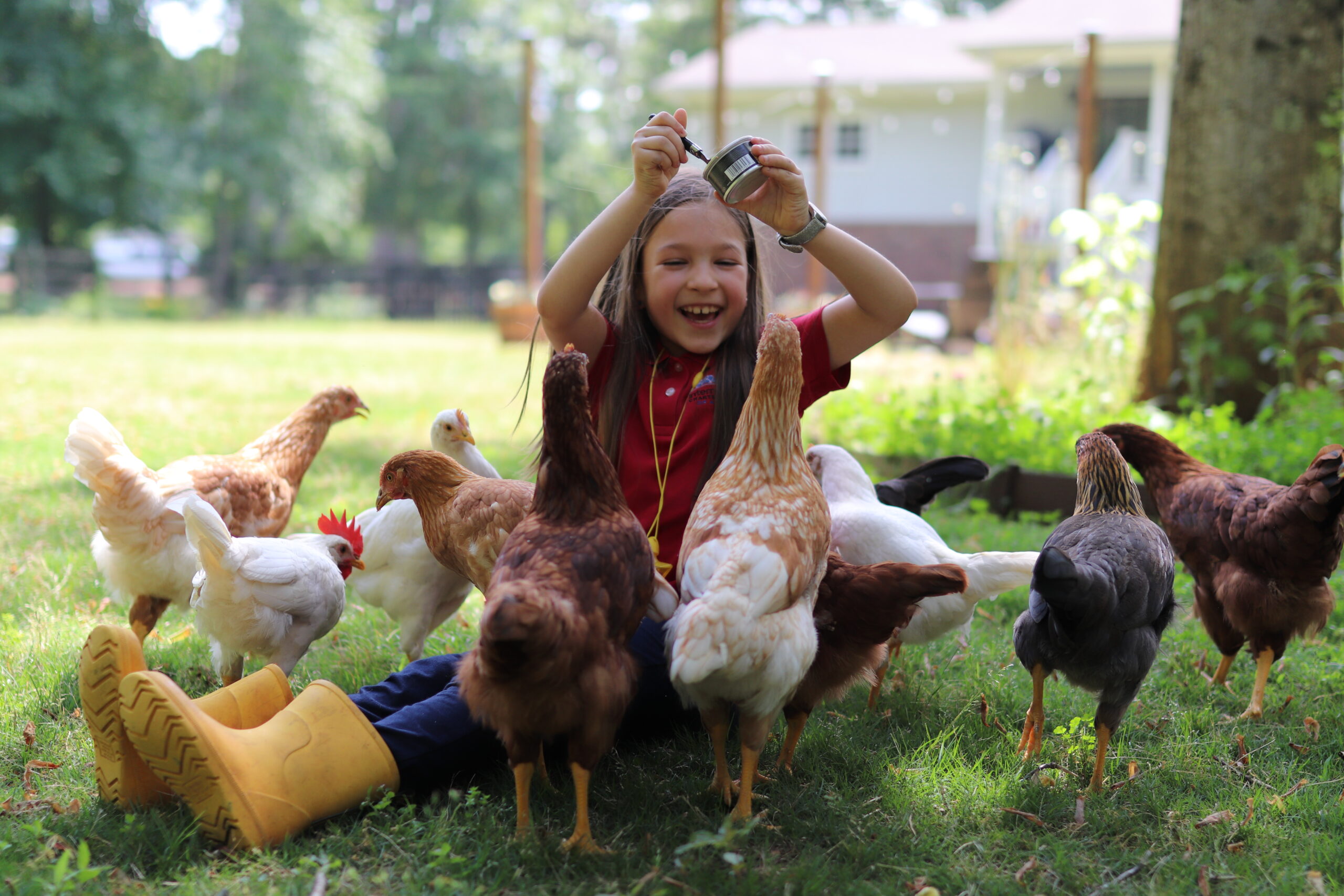
From the beginning, our goal with raising chickens has been to produce the healthiest eggs possible. As a result, we decided to pasture-raise our chickens by rotating them across our backyard using flexible fencing from Premier 1 Supplies.
While providing our hens with fresh forage every few weeks is great for their health and egg quality, it also means that aerial predators, including hawks, are a constant threat.
The good news is that we’ve figured out techniques to reduce our losses from aerial predators dramatically, but a residual risk remains.
If you don’t have the heart to deal with losses, I recommend locking your chickens up. That could mean offering them a large run enclosed in chicken wire, or leveraging a mobile chicken tractor, which offers your hens access to fresh pasture while protecting them from all predators.
If you decide to keep your egg-layers in a stationary coop with a run, I recommend considering a deep litter method to control manure build-up.
3. Manure Control
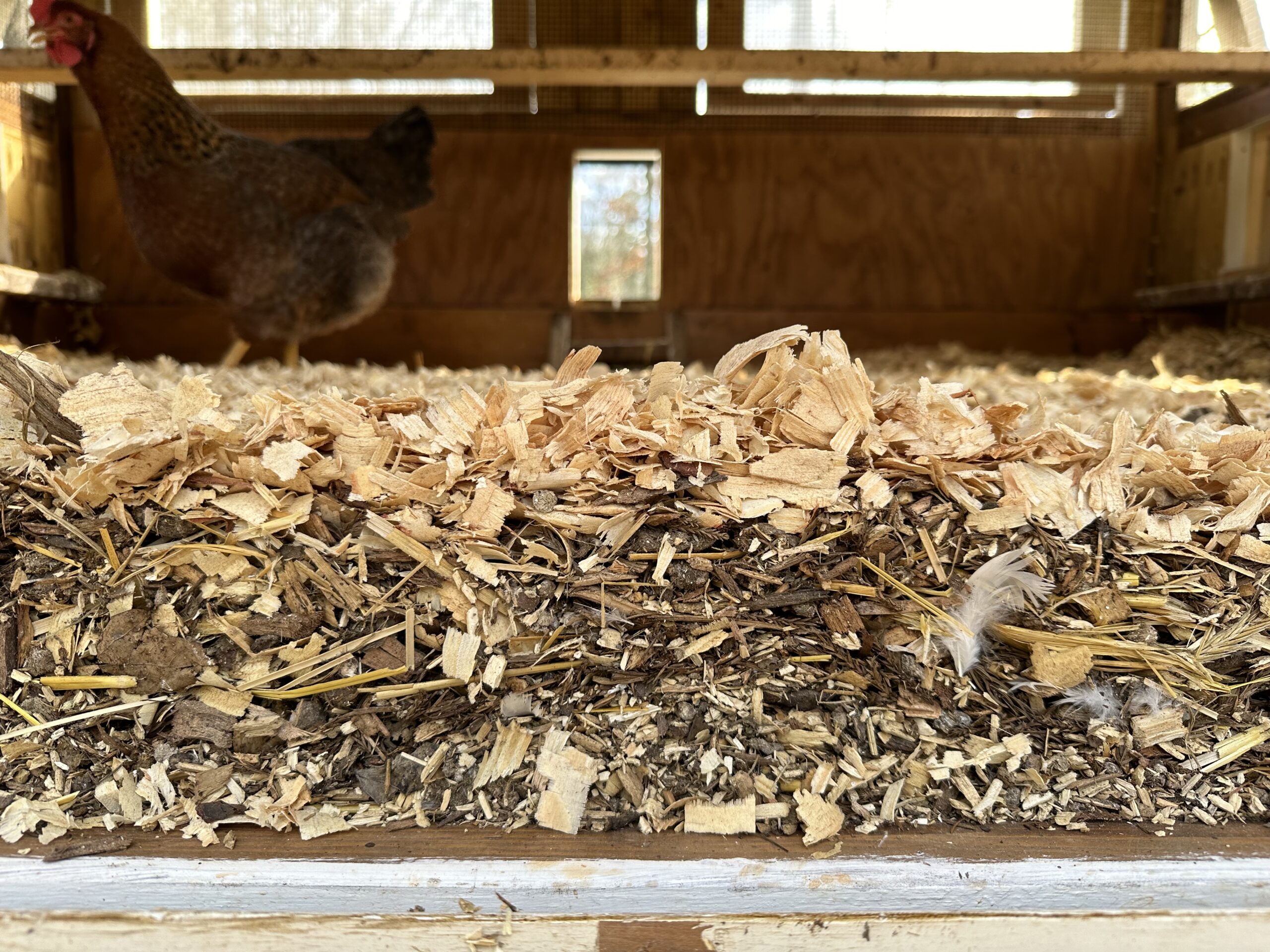
Two methods to prevent disease and avoid foul odor (from manure build-up) include deep littering and frequent rotation.
Chickens produce 50% of their manure at night, so if you have a stationary henhouse, it’ll fill up with poop quickly. The traditional — and, in my opinion, unsustainable — method of keeping the henhouse clean is to replace the bedding every week.
We don’t have the time or desire to do that. The better option is to keep adding carbonaceous material (e.g., pine shavings, hemp bedding or wood chips) to the henhouse to allow the carbon and the nitrogen (from the chicken poop) to compost.
For that approach to work, you need a deep enough henhouse to hold several layers of carbon. For reference, the bedding in our henhouse is often one foot deep or more. Once every couple of months, I scoop everything out and throw it on our compost pile, or my wife uses it directly in the veggie garden.
The second option for controlling manure is to move your chicken coop or henhouse frequently so the chickens poop on a new spot every couple of days. Of course, that only works with a mobile chicken tractor, which is one reason why I’m such a fan of them. When we move to our new (much larger) property, we’ll likely fully transition to mobile poultry infrastructure that we can move weekly along the pasture.
However, you don’t need pasture to benefit from a mobile chicken coop. For example, Justin Rhodes keeps his chickens in a fenced-in area on a deep litter bed made from wood chips. However, he uses a mobile henhouse that he moves across the chicken yard every few days to help spread the manure.
The advantage of Justin’s chicken yard is that his hens produce a ton of compost he can scoop out once a year before backfilling the yard with fresh wood chips.
4. Predator Protection
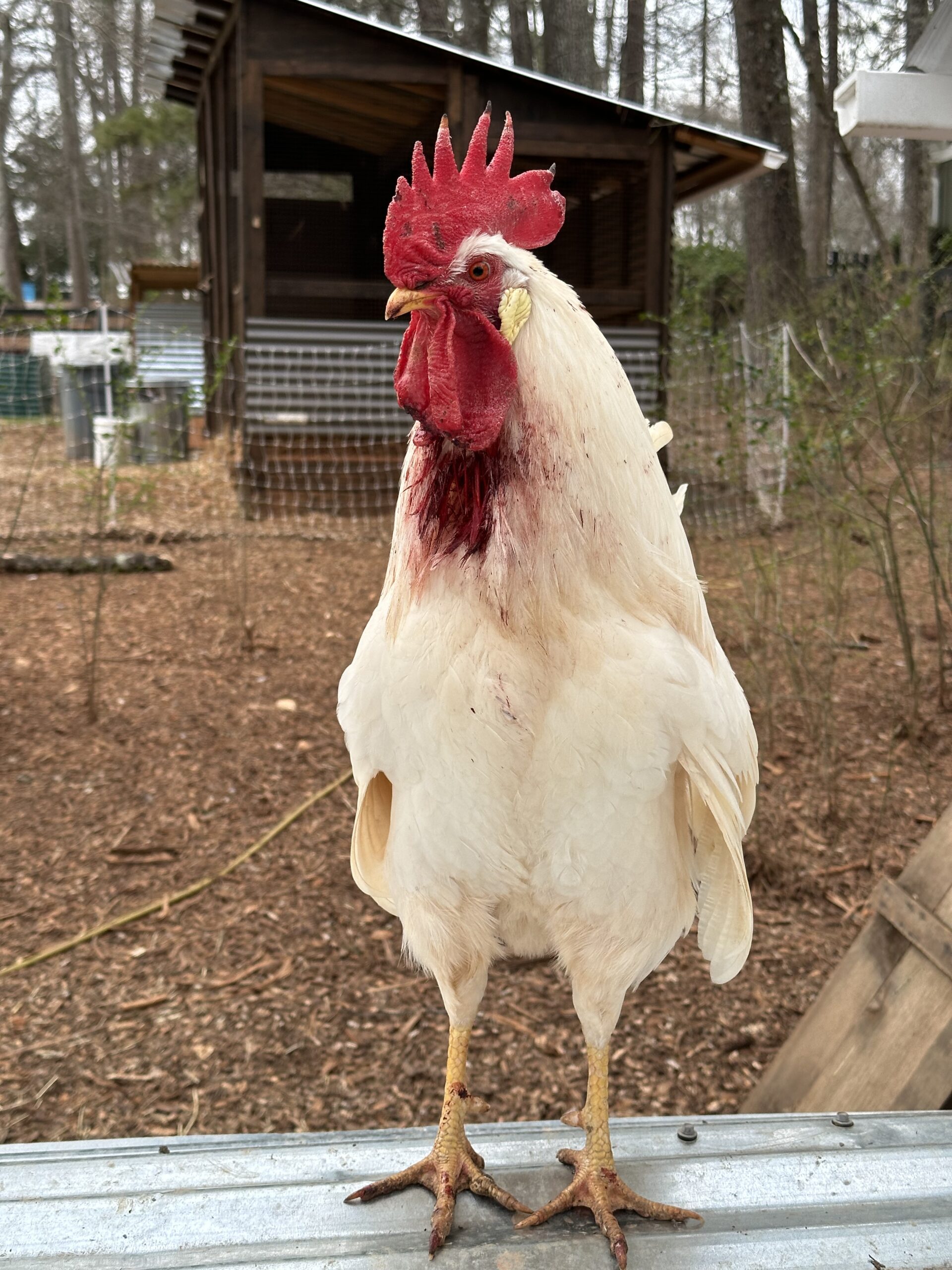
Everyone likes chickens, including most of the wildlife around you. We currently live in a suburban environment without many land-based predators that could get over or under our perimeter fence, but aerial predators such as owls and hawks have killed several of our chickens over the past few years.
The only way to ensure your chickens’ safety is to lock them up, which might not jibe with how you envision raising them.
However, as mentioned earlier in this article, locking up your chickens doesn’t have to mean keeping them in a stationary coop. If you’ve been following Joel Salatin, you know he’s a massive fan of mobile chicken tractors that allow him to produce 100% pasture-raised birds without exposing them to predators or requiring frequent fence changes.
We’ve experimented with several approaches to deterring predators, especially hawks, and have found that a combination of roosters and guard geese is relatively effective at keeping our losses to a minimum. We currently have five roosters and two guard geese protecting our two flocks of 33 egg-layers (combined).
When we move to our new property, we’ll likely add a livestock guardian dog to deter land-based predators and stick to our rooster/geese combo for aerial predator control.
To learn more about the latter (and other techniques we have tried that didn’t work), check out this video on YouTube.
5. Size and Roosting Space
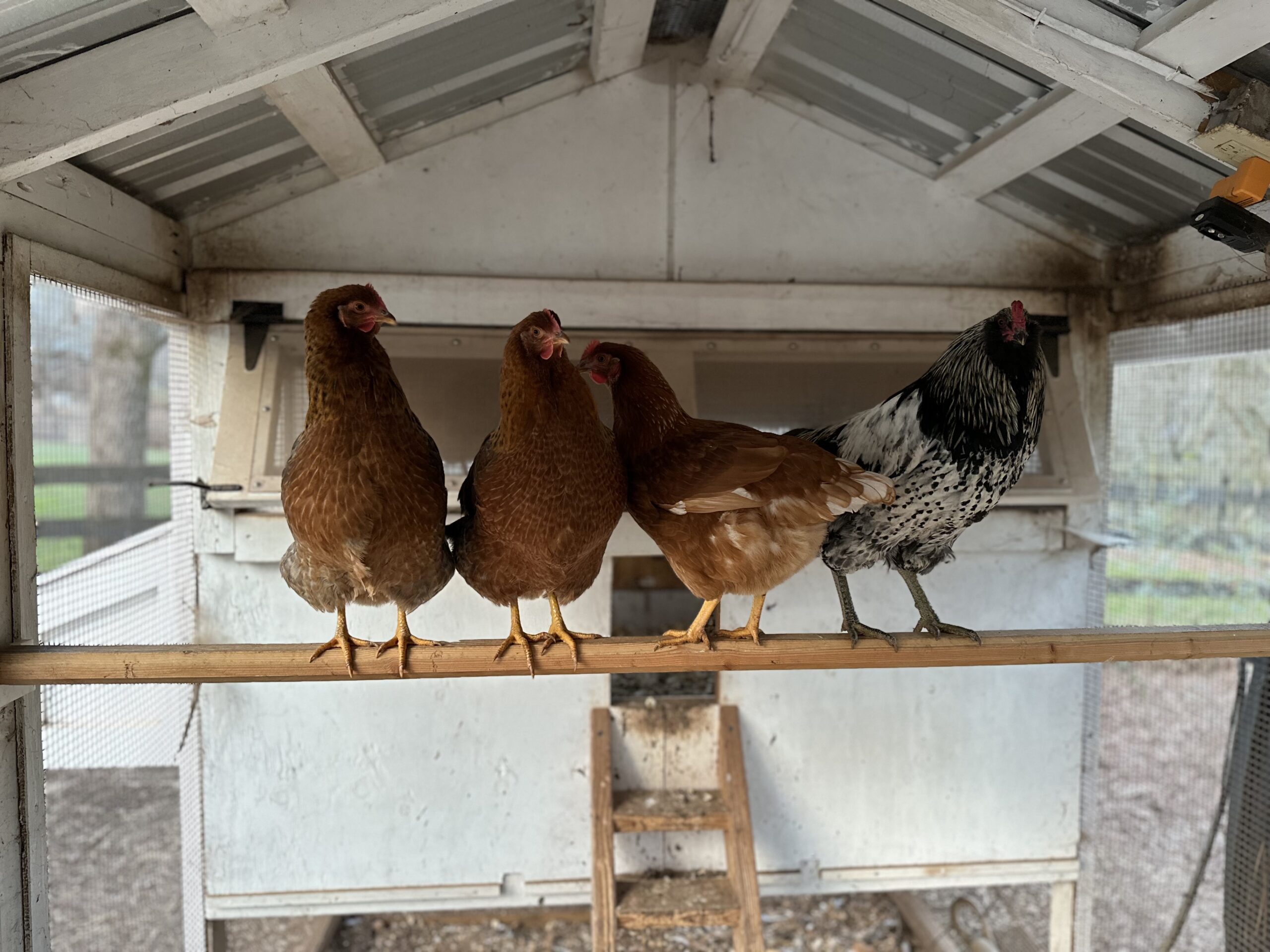
To keep your hens happy and healthy, you should provide approximately one foot of roosting space per bird.
The first coop we purchased came with two roosting bars (6 feet each) to accommodate 12 hens. We had 16 hens in our first flock, which was reduced to 14 birds after hawks killed two of them. Those 14 birds had enough space in the henhouse, but they produced enough manure to require adding carbonaceous material (hemp bedding) weekly.
Our second coop has three roosting bars, measuring 8 feet each, which offers enough space for 24+ birds. We could likely fit 30 or more birds into the second henhouse, because our hens like to stick together at night. That always leaves more than enough space on the roosting bars.
If you keep your hens in an enclosed run, you’ll need approximately 10 square feet of space per hen. The first coop we purchased came with an enclosed 12×6 run that we were able to retrofit with two additional roosting bars, thus increasing our roosting space to 24 feet (enough for 24+ hens).
6. Flock Size
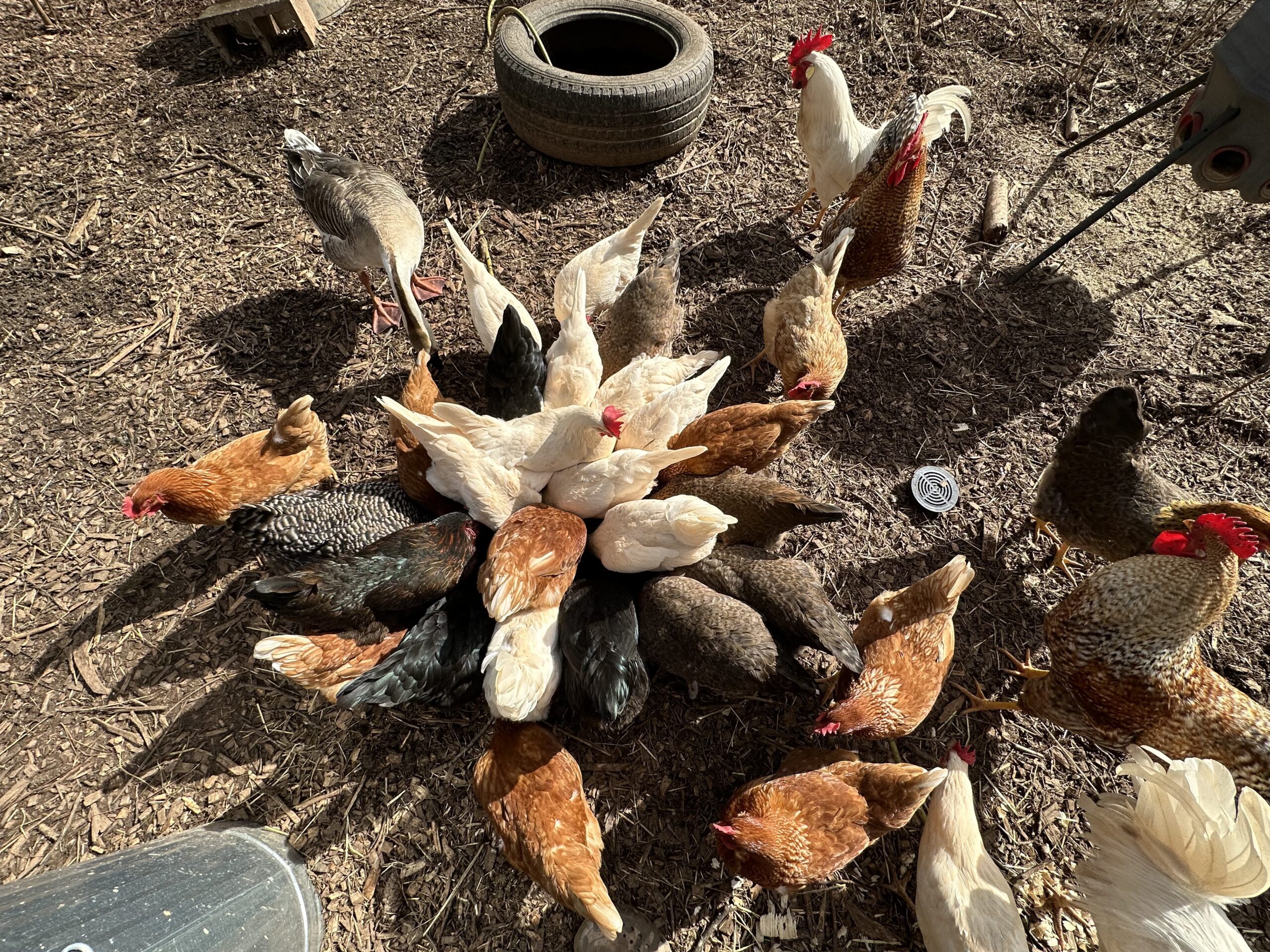
Based on our egg consumption in 2020, we figured we’d need at least eight chickens (we figured we’d get about six to eight eggs per day). Our coop was rated for 12 hens (based on the available roosting space and the run size), but to leave some wiggle room in case one or two died, we ordered 14 chicks from a hatchery.
When our chicks arrived in the mail from the hatchery, we realized they sent us 17 instead of 14. However, one died on the second day. As a result, we ended up with 16 chickens, including 15 hens and one rooster.
We foolishly assumed that 15 egg layers would be all we ever needed (or wanted). But there is this concept called “chicken math” that we didn’t consider.
If you’re unfamiliar with the term, “chicken math” humorously refers to the phenomenon where poultry owners plan to buy a specific number of chickens but end up purchasing more than intended, often because they underestimate their capacity or are unable to resist adding more birds.
When our hens went through their second molt in year two, their egg production declined noticeably. Combined with the occasional loss due to disease, accident or a predator, we realized we needed more chickens (i.e., to eventually replace the old flock).
Unfortunately, we didn’t have a second coop to house a new flock, so I had to build one. The new henhouse was an oversized replica of the old one, and could easily house 30 hens.
Now we have two large and immobile structures on our property that we can’t move. That dramatically reduces our flexibility to keep the two flocks apart, or to individually move them to fresh pasture.
I’m sharing this to encourage you to think about how you’ll replace your old flock when they stop producing eggs. Can you afford to dispatch the old hens and not get fresh eggs until the second flock starts laying? We wanted a continuous egg supply, so we decided to raise the second flock along with the old hens. Of course, doing so requires additional roosting space.
In our experience, such a migration is easier to accomplish with smaller and more mobile infrastructure, as opposed to large, stationary coops.
7. Run or Henhouse Only?

You might not need an enclosed run if you pasture-raise or free-range your chickens. That’s why we built our second chicken coop without one. We figured all we needed was a place for our hens to sleep and lay eggs.
However, there was one thing we didn’t consider before moving our second flock from the brooder into their new home.
I’m referring to teaching the chickens where they should sleep.
With our first flock, that was easy; we just locked them in the run for a week, and they eventually discovered how to climb up the stairs and into the henhouse where the roosting bars were.
We didn’t have that luxury with our second flock because they were able to roam freely around the henhouse we built on stilts. As a result, we had to catch 25 chickens every night and carry them into the henhouse. Eventually, they figured out to return at night to the same place they came from in the morning. It wasn’t a big deal, but it was certainly a nuisance.
The other advantage of having an enclosed run is that you can lock your chickens in if there is a predator around, if you need to do yard work, or if you have other humans or pets over who can’t or don’t want to get close to your free-ranging chickens.
The bottom line is that having an enclosed run has advantages, but I wouldn’t recommend building one if you plan on pasture-raising your birds.
8. Nesting Box Location
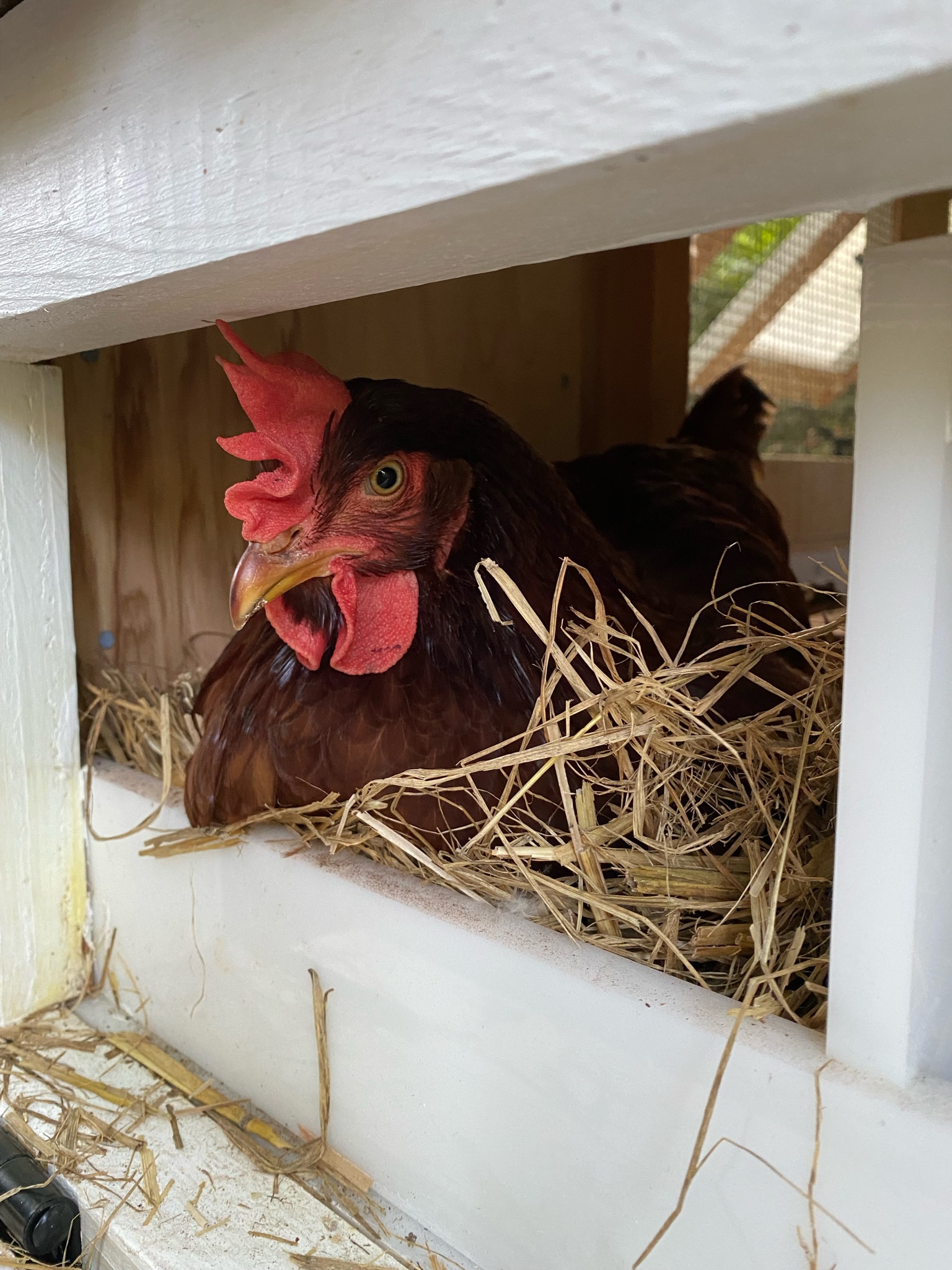
Most henhouses have nesting boxes attached to their sides, and that’s also true for the two coops we have. The advantage of that approach is that your hens can start laying eggs in the morning without leaving the henhouse.
In fact, about a couple of our hens lay an egg even before the coop’s door automatically opens at sunrise. Collecting eggs can be conveniently done from the outside and without entering the coop or henhouse.
The downside of having nesting boxes attached to the henhouse is that your hens will walk through poop to get into the nesting boxes. That can increase the likelihood of ending up with dirty eggs.
The other problem is that some hens like to sleep (and poop) inside of nesting boxes. That’s why we started closing them off using a sheet of plywood (until our hens stopped sleeping in the nesting boxes).
Going forward, we’ll consider adding nesting boxes to the side of the enclosed run to reduce the likelihood of those issues.
9. Feed and Water

You have endless options when it comes to poultry waterers and feeders, and picking the right one can be challenging. We’ve tried dozens of products to determine which works best for us.
Whatever feeder and waterer you pick for your coop, here are a couple of factors to consider:
- High-quality feed is expensive, so you want a feeder that reduces feed waste (chickens are masters at wasting feed).
- Daily chores can become a burden, so you want a feeder and waterer you don’t have to refill daily (or multiple times a day).
- How will you prevent your water from freezing in winter if you live in a cold climate? (We use the Freeze Miser, which I reviewed here.)
- Is your feeder rodent-proof?
- Ease of cleaning and maintenance.
Among all the feeders and waterers we tried (including troughs, step-on feeders and simple bowls, to name a few), we like the ones from CoopWorx best because their feed silo holds up to 80 pounds of feed, is relatively rodent-proof, and can be easily moved.
The same is true for their AutoFill Water Silo, which features a float valve and can be hooked up to a water hose so you never run out of water.
To learn more, check out our in-depth CoopWorx review.
10. Stationary Coop or Mobile Chicken Tractor?

Mobile chicken tractors are a relatively new phenomenon compared to the traditional chicken coop. In fact, when we decided to add chickens to our homestead, we weren’t even aware of mobile poultry infrastructure. It wasn’t until we learned about Joel Salatin and his massively successful pastured poultry operation that mobile infrastructure appeared on our radar.
Stationary coops are difficult or impossible to move. The problem is that your circumstances, goals and ideas may change over time, especially if you’re new to homesteading. So I encourage you to avoid setting up any permanent structures (including fencing) for the first few years. Instead, I recommend building a mobile chicken tractor you can move around, even if you don’t plan on rotating your chickens weekly.
Try a spot for a couple of months or even years. If you’re still convinced it’s the best spot after all that time, build something permanent. However, there is a high probability that your requirements will change and you’ll want (or need) to move your coop.
We were sure we had picked the perfect spot for our two coops until we realized we had just hamstrung our plans to rotate the chickens. We always had to provide a path for them back to the same spot, so imagine the hassle of running 100+ feet of fencing just to get to the opposite corner of our backyard.
At that moment, we realized how much easier everything would have been with mobile infrastructure.
The other advantage of a mobile coop is better manure control, especially if you move the coop every couple of days or weekly.
Recommended Chicken Coops
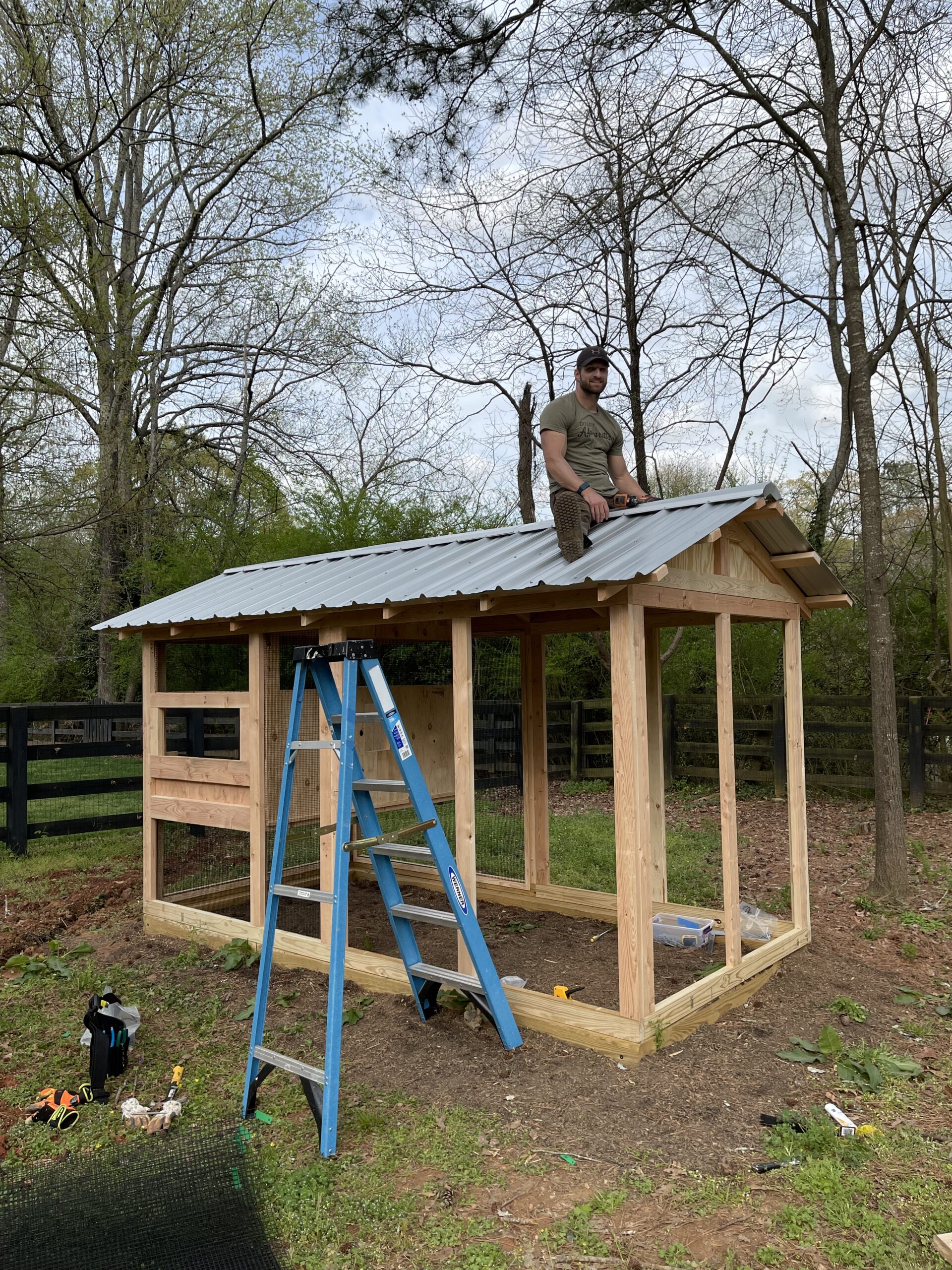
Based on our experience with raising egg-layers and meat birds over the past few years, here are different coops we can recommend, depending on your individual needs and requirements:
- Suscovich Chicken Tractor. This is one of our favorite mobile coops. It was designed for meat birds but can easily be outfitted with nesting boxes and roosting bars for egg layers. We’ve been using the Suscovich Chicken Tractor for raising chicks, ducklings and meat birds, and we’ll use it later this year for turkeys.
- Justin Rhode’s ChickShaw 5.0 is Justin’s version of the ideal mobile chicken tractor for up to 40 chickens (when pasture-raised). We haven’t built this one yet, but we plan on doing so later this year.
- Carolina Coops American Coop. This is the first chicken coop we purchased and then later copied by building it ourselves (only the henhouse without the run). As mentioned above, I don’t think we’ll do stationary coops again, but if that’s what you want, Carolina Coops is a premium (and pricey) option.
- Hen Gear Portable Chicken Tractor. We’re considering Hen Gear’s portable pastured chicken coops when we move to our new property. Available in different sizes for up to 1,000 chickens, they’re lightweight, easy to move, and incredibly sturdy.
If you plan on commercially raising chickens for meat or eggs, I encourage you to purchase Joel Salatin’s book Polyface Designs, which provides detailed build plans for scalable, mobile infrastructure for poultry and other livestock.
Summary & Final Thoughts
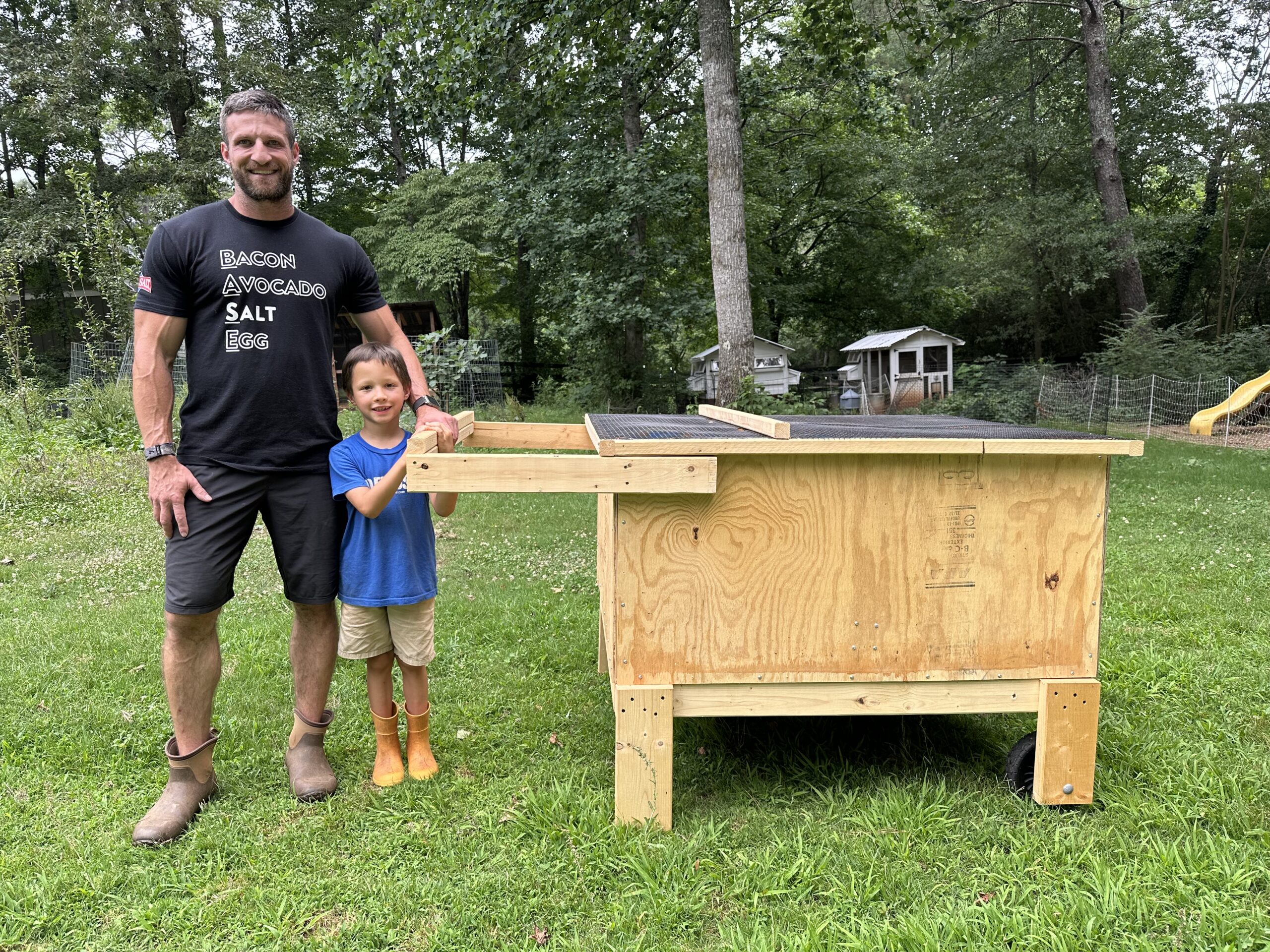
Building or purchasing a chicken coop requires more consideration than figuring out how large it has to be to fit the desired number of hens.
Unfortunately, we didn’t realize that until we had spent several thousand dollars on our first coop. Don’t get me wrong, our American Coop is built like a tank and is holding up great. But we quickly outgrew it — literally and figuratively.
I hope the factors illustrated in this article will help you build or purchase a coop that will meet your requirements today while offering enough flexibility to adapt when your requirements change (as I’m sure they will).
Now I’d like to hear from you! What type of coop did you want to build or buy, and has the information in this article changed your idea of the perfect coop?

Michael Kummer is a healthy living enthusiast, the founder of MK Supplements and the host of the Primal Shift podcast. His goal is to help people achieve optimal health by bridging the gap between ancestral living and the demands of modern society. He runs the Kummer Homestead with his wife Kathy and their two children.
